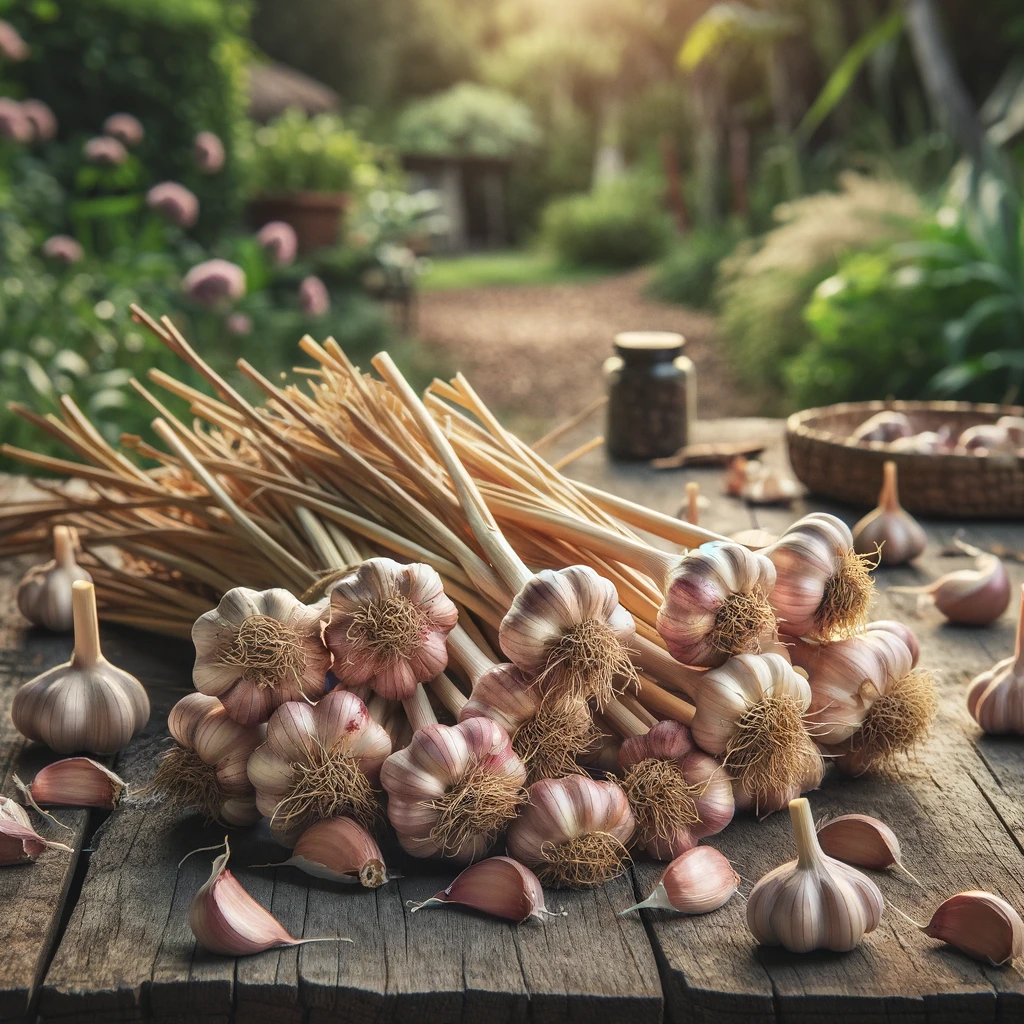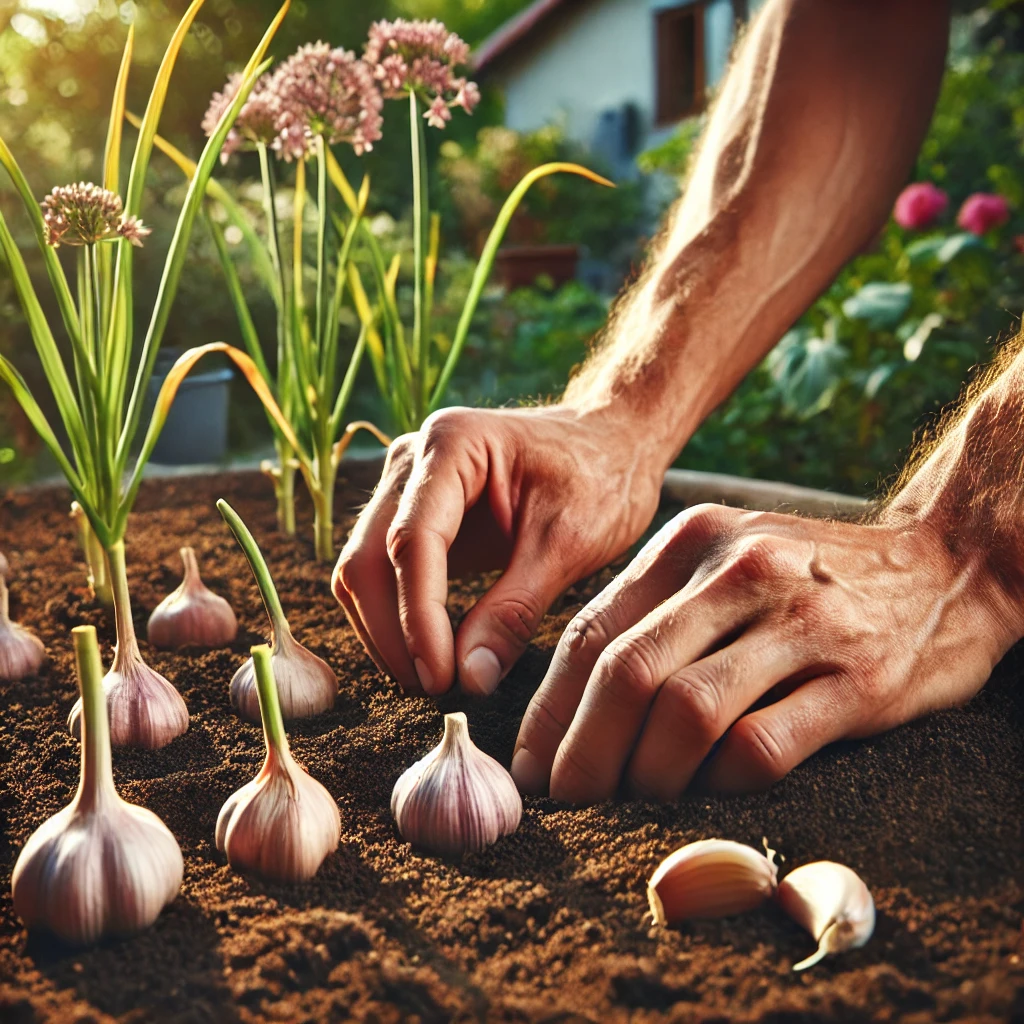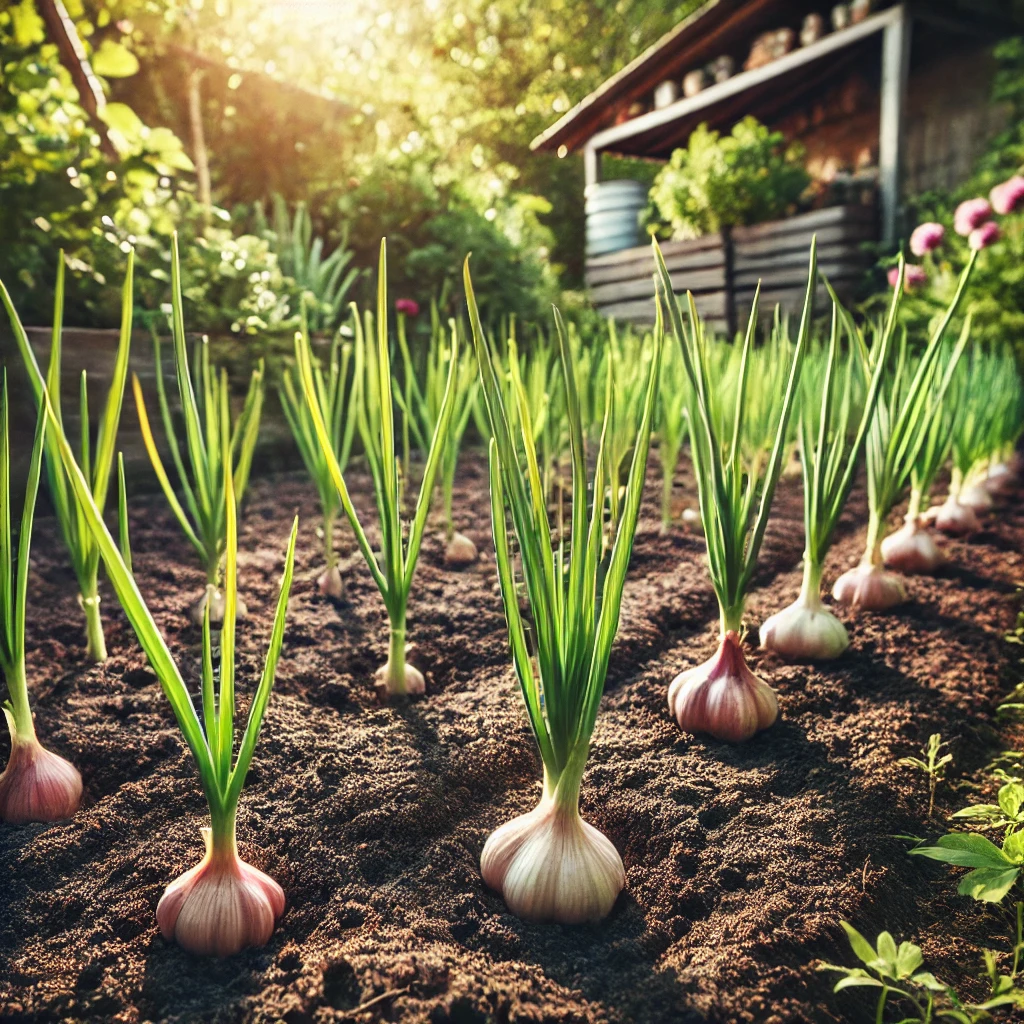Planting garlic is a rewarding activity, whether you’re a seasoned gardener or a beginner looking to grow your own food. In 2025, with the emphasis on organic, locally sourced food, garlic has become a staple crop in gardens worldwide. Garlic not only enhances flavor in various dishes but also brings multiple health benefits. This guide covers everything you need to know to successfully plant, grow, and harvest garlic in 2025. Let’s dive into the best techniques, timing, and tips for a productive garlic-growing season.
Why Plant Garlic? Benefits Beyond the Kitchen
Garlic is one of the most popular crops for home gardeners, and for good reason. Here are some reasons why planting garlic is a must:
- Flavorful Addition: Garlic adds a rich flavor to dishes across various cuisines.
- Health Benefits: Garlic is known for its immunity-boosting properties and is packed with vitamins and antioxidants.
- Low Maintenance: Once planted, garlic requires minimal care, making it a great choice for busy gardeners.
- Cost-Effective: Growing your own garlic is a budget-friendly alternative to buying organic garlic at the store.
- Pest Deterrent: Garlic naturally repels certain pests, making it a beneficial companion plant in vegetable gardens.
Choosing the Right Garlic Varieties for 2025
Garlic comes in two main types: hardneck and softneck. Each type has unique characteristics, so let’s explore which one is right for your garden.

1. Hardneck Garlic
Hardneck garlic varieties are known for their rich flavor and are often preferred by gourmet chefs. This type produces a central flower stalk, known as a scape, which is edible and delicious.
- Flavor: Bold and complex, often spicier.
- Climate: Thrives in colder climates.
- Varieties: Rocambole, Purple Stripe, and Porcelain.
2. Softneck Garlic
Softneck garlic varieties are better suited to warmer climates and are easier to braid due to their flexible stalks.
- Flavor: Milder, often with subtle, sweet notes.
- Climate: Ideal for warmer regions.
- Varieties: Silverskin, Artichoke.
Preparing to Plant Garlic: Timing and Soil Preparation
When to Plant Garlic in 2025
Garlic is typically planted in the fall, as it requires a period of cold dormancy to form cloves. The ideal planting window is mid-September to late November, depending on your climate.
- Cold Climates: Plant garlic in late September or early October.
- Moderate Climates: October is usually the best time to plant garlic.
- Warmer Climates: Plant garlic as late as November to avoid early sprouting.
Soil Preparation
Garlic thrives in well-drained, loamy soil rich in organic matter. Here’s how to prepare your soil for planting:
- Clear the Area: Remove any weeds and rocks from the planting area to reduce competition.
- Add Organic Matter: Enrich the soil with compost or well-rotted manure.
- pH Level: Garlic prefers a pH between 6.0 and 7.0. Test your soil and adjust if necessary with lime or sulfur.
- Loosen the Soil: Garlic requires loose soil to develop large bulbs, so till the area to about 8 inches deep.

Step-by-Step Guide to Planting Garlic
- Separate the Cloves: Break apart the garlic bulbs into individual cloves, leaving the papery skin intact.
- Choose Healthy Cloves: Select the largest cloves for planting, as they tend to produce the best bulbs.
- Planting Depth and Spacing: Plant cloves with the pointed end up, about 2 inches deep. Space them 4-6 inches apart in rows 12 inches apart.
- Watering: Water the garlic immediately after planting to help it settle in. Consistent moisture is key for growth.
Garlic Care Guide: Watering, Mulching, and Fertilizing
Watering
Garlic needs regular watering, especially during its early growth stages in the fall and spring. Water deeply every week, keeping the soil consistently moist but not soggy.
Mulching
Mulching is crucial to protect your garlic plants, especially in colder climates. Add a 3-4 inch layer of straw or shredded leaves over the planting area to insulate the soil. Mulch also helps retain moisture, prevent weeds, and regulate temperature.
Fertilizing
Fertilizing garlic can boost its growth and yield. Apply a nitrogen-rich fertilizer in the spring when shoots begin to emerge. Avoid over-fertilizing in late spring, as this can result in leafy growth at the expense of bulb size.
Garlic Pests and Diseases to Watch Out For
Garlic is relatively resilient, but it can still be affected by a few pests and diseases.
- Aphids: These tiny insects can be deterred by planting garlic near other pest-prone plants.
- White Rot: This fungal disease affects garlic roots. Practice crop rotation and avoid planting garlic in the same spot for at least 3 years.
- Rust: This fungal disease causes orange spots on garlic leaves. Use a fungicide if necessary and ensure proper air circulation.

Harvesting Garlic in 2025: How to Know When It’s Ready
Harvesting garlic at the right time is essential for achieving large, flavorful bulbs.
- Hardneck Garlic: Harvest when 4-5 leaves have turned brown but 5-6 leaves remain green.
- Softneck Garlic: Harvest when the majority of the leaves have turned brown.
To harvest, gently dig up the bulbs with a garden fork, being careful not to damage them.
Post-Harvest: Curing and Storing Garlic
Once harvested, garlic needs to be cured to enhance its flavor and prolong its shelf life.
- Clean the Bulbs: Brush off excess soil, but avoid washing the bulbs.
- Curing Process: Hang garlic in a dry, well-ventilated space for 2-4 weeks. Curing allows the outer skin to harden, which protects the cloves.
- Storage Tips: Store garlic in a cool, dark place with good airflow. Avoid storing it in the refrigerator, as this can encourage sprouting.
Garlic Planting Trends in 2025: What’s New?
With the increasing popularity of sustainable gardening, here are a few trends to consider for your garlic garden in 2025:
- Heirloom Varieties: Many gardeners are choosing heirloom garlic varieties for their unique flavors and adaptability.
- Companion Planting: Planting garlic with tomatoes, peppers, and lettuce can boost overall garden health by repelling pests.
- Container Gardening: Garlic can be grown in containers if space is limited. Just ensure the container is at least 12 inches deep.
- Urban Gardening: Even urban dwellers can grow garlic in balcony gardens, adding a touch of green to their city spaces.
Common Garlic Planting Questions for 2025
Can I Plant Garlic from the Grocery Store?
While possible, it’s not recommended to plant garlic from the grocery store, as it may be treated with chemicals to prevent sprouting. For best results, buy garlic from a local nursery or a trusted seed supplier.
How Long Does Garlic Take to Grow?
Garlic takes 8-9 months to mature. When planted in the fall, it’s typically ready for harvest by mid-summer of the following year.
Is Garlic a Good Companion Plant?
Yes! Garlic is an excellent companion plant that can deter pests like aphids, spider mites, and Japanese beetles.
Conclusion
Growing garlic in 2025 is a fantastic way to enjoy fresh, organic produce at home. Whether you’re planting in a backyard garden, raised beds, or even containers, garlic is a versatile and easy-to-grow crop that rewards you with delicious, health-boosting bulbs. By following the tips outlined in this guide, you can look forward to a bountiful garlic harvest next year.